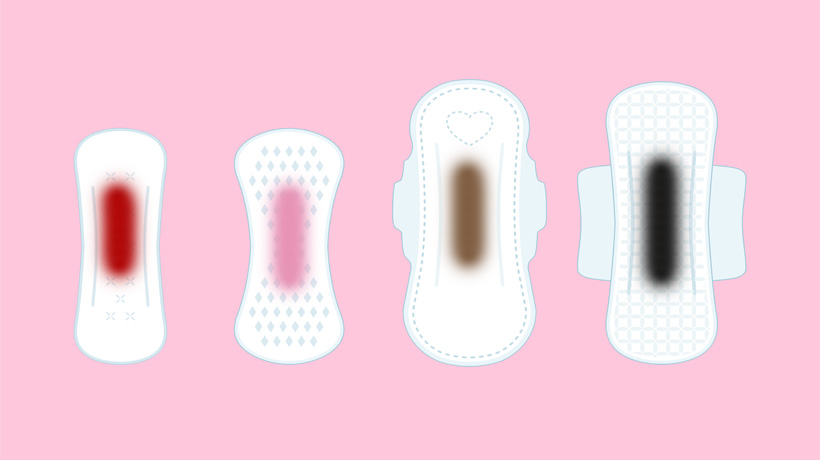Mother Nature has given the “gift” of a regular menstrual cycle to most women, and its normal recurrence each month is a sign of good health. What’s less widely known is that the color of your flow can also offer an insightful look into your overall health. So while it may be burdensome to manage the messiness that can be included with your cycle, it’s also an indicator that’s helpful in identifying underlying health issues. Here are some of the different ways the color of your period blood can indicate the status of your health.
Brown
You might occasionally notice changes in the color of your blood, and sometimes it’s a harmless reaction to changes in lifestyle and/or environment. When your blood is brown, this can be such an occasion. This color can mean simply a normal flow of blood that has been sitting in the uterus and hasn’t oxidized to turn the typical red shade. When this happens, you’re shedding old blood that has lingered in the uterus and wasn’t expelled in the previous cycle.
It can also mean something less normal, such as implantation spotting, which is an early sign of pregnancy. If you are pregnant, it can also mean a miscarriage or pregnancy spotting. As a result, if you are pregnant or suspect you are pregnant, it’s important to check in with your doctor. It can also mean lochia, which is the normal discharge from the uterus after birth.
Dark red
A darker shade of red might mean many things, including implantation spotting, lochia, or even an infection. However, it usually signals the end of your period, as the blood has been sitting in the uterus longer and hasn’t oxidized to change the normal light red color.
Blood is bright red
The bright red shade of period blood is seen as the typical color of a healthy flow. It’s especially present at the beginning of your period because it is fresh. However, it can also mean an infection is present if this color is present in spotting in between periods. These infections could include gonorrhea or chlamydia.
The color of a healthy flow is also not something you typically see during pregnancy, so this could also indicate the onset of a miscarriage or early labor. Bright red can also indicate the presence of polyps or fibroids since these can cause a heavy flow.
Black
If your blood is black, you may be experiencing a myriad of symptoms. For one, you might simply have a normal flow, as the color black is related to brown and simply means old blood is present. However, it can also be a sign of miscarriage.
Pink
Blood can also present as pink. You might be experiencing implantation spotting, or lochia after pregnancy, low estrogen levels, mid-cycle “ovulation” spotting, or the beginnings of a miscarriage.
Orange
This can point to pregnancy due to implantation bleeding, especially if the color doesn’t return to red. It can also be a heavy indicator of infections such as a bacterial infection or a sexually transmitted disease.
Gray
Seeing gray or off-white discharge is a good reason to call your doctor. This often points to the presence of a bacterial infection such as bacterial vaginosis. Gray discharge can also be a sign of a miscarriage or tissue passing from the vagina.
While changes in period blood color are common, they can evidently point to more serious changes in your body. For this reason, if you suspect any abnormalities, it’s an excellent decision to pay a visit to your doctor.
Sources:
https://www.webmd.com/baby/implantation-bleeding-pregnancy
https://www.healthline.com/health/womens-health/period-blood#period-blood-color-chart
https://my.clevelandclinic.org/health/articles/9682-pregnancy-physical-changes-after-delivery



